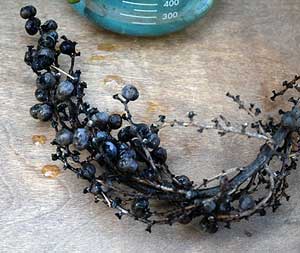The Wonderful World of Monocots
Monocotyledons, commonly referred to as monocots, are flowering plants whose seeds typically contain only one embryonic leaf, or cotyledon. A quarter of the world’s known plants are monocots. They are the most economically important group of plants to humans today in agriculture, horticulture, forestry and fiber industries. Here are a few samples of monocots in our plant collections.

1) Allium schubertii (Ornamental Tumbleweed Onion)
- Dried seed heads look like starry tumbleweeds or shooting star fireworks
- Located in the Soest Herbaceous Display Garden, bed 6 at the Center for Urban Horticulture
2) Austroderia richardii syn Cortedaria r. (Toetoe Grass, Plumed Tussock Grass)
- Ornamental grass native to New Zealand
- This “pampas” grass seems to be behaving itself in the Pacific Northwest, unlike others that do seed around and could be considered invasive.
3) Phormium colensoi (Mountain Flax, Wharariki)
- One of two species in the genus Phormium; both are endemic to New Zealand.
- Fiber from its broad, sword-like leaves, can be made into Maori baskets.
4) Phyllostachys nigra (Black Bamboo)
- Native to China, but widely cultivated elsewhere
- Known for its ornamental beauty and prized for decorative woodworking

5) Trachycarpus fortunei (Chinese Windmill Palm)
- Only palm that is reliably hardy to the Puget Sound area
- Dioecious, with male and female flowers produced on separate trees
- Sample of mature fruit cluster and frond
To locate specimens of these plants, please visit our interactive map:
http://depts.washington.edu/uwbg/gardens/map.html.